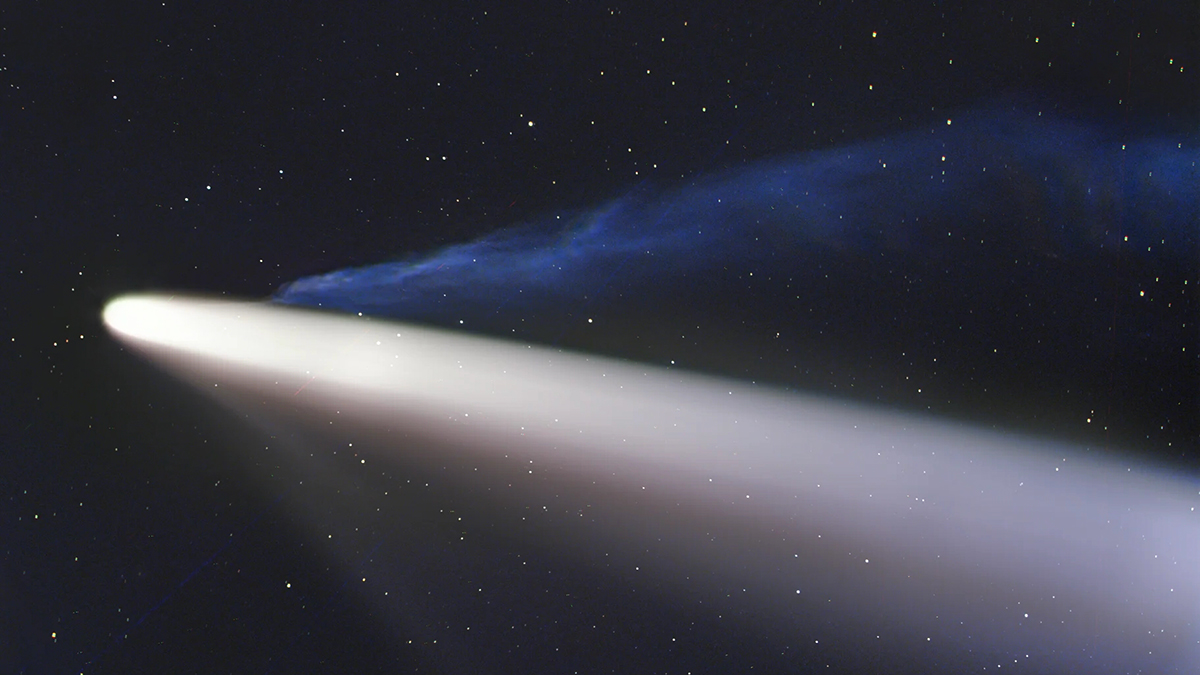
Stargazers Will Have The Chance To Spot Probably The Most Impressive Comet Of The Year
Interview With ExpertThere are about 4,000 known comets in our Solar System so far and most of them come from beyond Pluto, in the Kuiper Belt and Oort Cloud.
One of such, called C/2023 A3 Tsuchinshan-ATLAS, will make its closest approach by Earth in mid-October and won’t be back for an astonishing 80,000 years. Many stargazers from all around the world are already poised to catch this rare beauty with their cameras and Gerald Rhemann is the one who probably did so in the most captivating way.
More info: Gerald Rhemann
The Oort Cloud comet called C/2023 A3 Tsuchinshan-ATLAS will make its first close pass by Earth in mid-October and won’t be back for another 80,000 years
Image credits: Gerald Rhemann
Image credits: Gerald Rhemann
Image credits: Gerald Rhemann
According to NASA, comet A3 Tsuchinshan-ATLAS was discovered in 2023 by observers at China’s Tsuchinshan Observatory and the ATLAS (Asteroid Terrestrial-impact Last Alert System) telescope in South Africa. Therefore, the celestial object was named in honor of both observatories.
The latest research showed that Tsuchinshan-ATLAS’s brightness is between 2 and 4, while, in comparison, the brightest visible star in the night sky, Sirius, has a magnitude of –1.46. Yet unfortunately, the comet won’t be visible in daylight hours, except at twilight.
I guess it’s interesting to note that in the past 300 years of astronomical observation, only 9 previous comets have been bright enough to be able to see them during the day (including Comet West in 1976 and Comet Hale-Bopp in 1997).
“Typically, a comet would have to reach a magnitude of –6 to –10 to be seen in daylight. That’s extremely rare,” NASA astronomer Bill Cooke explained, but also added that Tsuchinshan-ATLAS is still a very extraordinary comet since by early November, the comet will be gone again for the next 800 centuries.
While so many people all around the world are trying to catch the best shot of this very special approach, Gerald Rhemann is definitely among the ones that did it in the most detailed and mesmerizing way.
He started astrophotography back in 1987 and within two years, comets were and still are his favorite objects, including one of the most beautiful and brightest ever seen, comet Hale-Bopp, in 1997, which was visible to the naked eye high in the sky for several months.
Gerald lives in Vienna, the capital of Austria, but for the best photographic results he always has to travel to destinations that are not affected by light pollution.
“In 2001, I decided to travel to one of the darkest places in the world – Namibia,” the astrophotographer shared in the interview with Bored Panda. “I have been there 11 times now and built an observatory on the Tivoli farm, which I also can use remote from Vienna.”
Asked what is the most special about Tsuchinshan-ATLAS comet, Gerald mentioned its dustiness.
“Dust is much easier to see with the naked eye than an ion tail,” he explained. “Now in October, forward scattering occurs, which can make a comet illuminated from behind (by the Sun) appear significantly brighter, as the dust and ice crystals reflect and enhance the comet’s apparent brightness by scattering the light toward the observer.”
For those interested in spotting this rare comet approach by themselves, the astrophotographer noted that the best day should be the 13th of October, since the comet will reach its closest point to Earth.
“The best time to see it will be between October 12 and 14. You will find the comet very low in the western sky one hour after sunset,” he shared.
NASA astronaut Matthew Dominick managed to catch the comet rising up over the horizon just before orbital sunrise with an aurora hovering nearby
Image credits: Matthew Dominick
Image credits: Matthew Dominick
No less impressive was a recently shared time-lapse of the comet made by NASA astronaut Matthew Dominick from the International Space Station.
“So far Comet Tsuchinshan-ATLAS looks like a fuzzy star to the naked eye looking out the cupola windows,” the commander of the SpaceX Crew-8 mission shared. “But with a 200mm, f2 lens at 1/8s exposure you can really start to see it. This comet is going to make for some really cool images as it gets closer to the sun. For now a time lapse preview,” he added next to the short video giving a spectacular glimpse into Tsuchinshan-ATLAS rising up over the horizon just before orbital sunrise with an aurora nearby.
Tsuchinshan-ATLAS has already stoked so much excitement all over the internet that some people are even calling it “the comet of the century”. Some people believe that this comet will outshine everything but the Moon and will stretch its tail over a huge portion of the sky, while others remain more skeptical.
“By the looks of it, it is already visible to the unaided eye in good conditions, and there is a chance that it will get considerably brighter,” said Dr. Gregory Brown, senior public astronomy officer at the Royal Observatory Greenwich. “But how bright? We honestly don’t know.”
Image credits: Pepe Chambó
The scientists surmise that Tsuchinshan-ATLAS came from the most distant region in our solar system – Oort Cloud – a giant shell of billions of comets.
I don’t know how many others will try to see this once-in-a-lifetime event, but I’m completely mesmerized by Tsuchinshan-ATLAS; therefore, I have already found the darkest place to book in Portugal, Alentejo, called Alqueva sky, which is internationally certified as a Dark Sky Reserve and can’t wait for next weekend!
People from all around the world were mesmerized by this rare celestial visitor
If you are somewhere you can see it, great, something to tell your grandkids, but as most of us won't, and it's darn certain sure that most of us here won't be around in 80 years, never mind 80,000 years, just take some pics. Thanks!
If you are somewhere you can see it, great, something to tell your grandkids, but as most of us won't, and it's darn certain sure that most of us here won't be around in 80 years, never mind 80,000 years, just take some pics. Thanks!

 Dark Mode
Dark Mode 

 No fees, cancel anytime
No fees, cancel anytime 






































































54
4